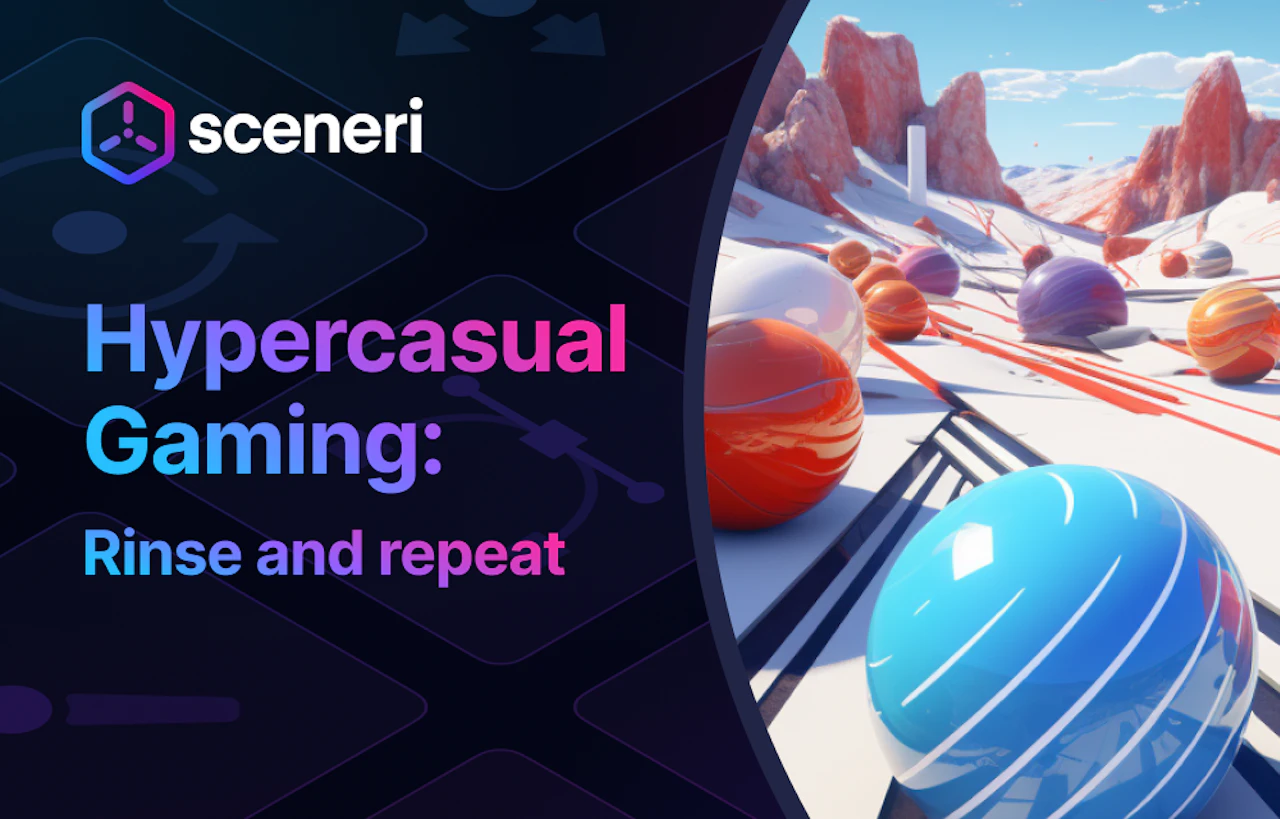Hypercasual Gaming: Rinse and Repeat
Hypercasual games are characterized by their ease of play and broad appeal. They typically feature plain visuals, simple controls, and uncomplicated gameplay.
What are Hypercasual Games?
Hypercasual games are characterized by their ease of play and broad appeal. They typically feature plain visuals, simple controls, and uncomplicated gameplay. This makes them easy to learn and pick up, even for novice gamers. Well-known examples of hypercasual games include Snake.io and Tall Man Run, which were two of the most popular games of 2022.
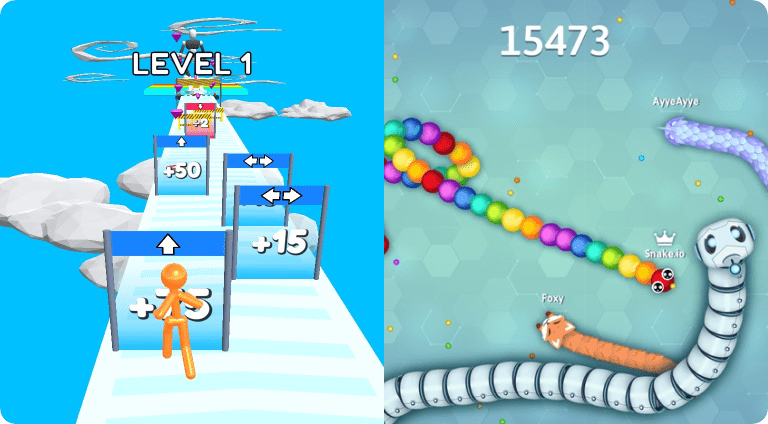
Snake.io and Tall Man Run
They’re a combination of casual and mid-core games. They have the simple, easy-to-learn gameplay of casual games, but they also offer more depth and complexity. This makes them appealing to a wider range of players, from casual gamers to hardcore gamers.
Here are some of the key features of hypercasual games:
- Minimalistic graphics: Hypercasual games typically have simple, uncluttered visuals with few colors and shapes. This makes them easy to load and play on low-powered devices.
- Intuitive controls: Hypercasual games have controls that are easy to understand and use. This makes them accessible to players of all ages and skill levels.
- Straightforward gameplay: Hypercasual games have simple, easy-to-understand gameplay. This makes them perfect for short gaming sessions.
Almost one-third of the most downloaded games are currently hypercasual titles—this amount increased by 157% as compared with that in 2018. The good news is that there is still plenty of potential for new publishers to find success in hypercasual. It’s a genre which is played by every demographic, and the design of hypercasual means that anyone can enjoy a burst of simple gaming fun.
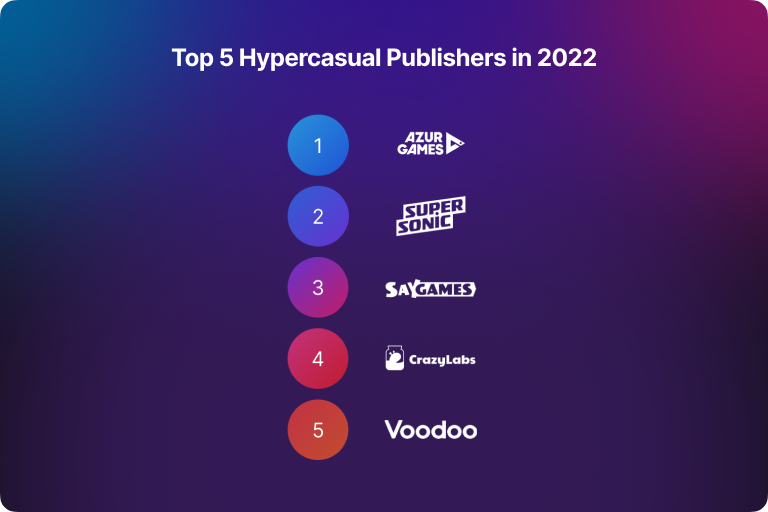
Source: Mobilegamer.biz
Hypercasual has little to no other features
Simplicity is important for hypercasual games because it makes them easy to pick up and play. This is essential for attracting players who are looking for a quick and easy gaming experience. However, depth is also important because it gives players a reason to keep coming back. This can be achieved by offering progression, different meta layers, and features that allow players to achieve a sense of accomplishment.
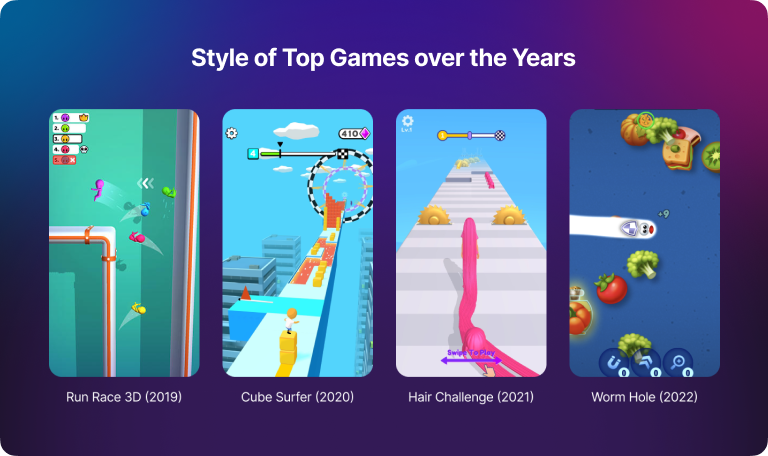
Here are some specific examples of how hypercasual games can increase retention and engagement:
- Progression: Many hypercasual games offer a sense of progression by allowing players to level up, unlock new content, or compete against other players. This gives players a goal to work towards, which can help to keep them engaged.
- Meta layers: Some hypercasual games offer meta layers, such as a story mode or a crafting system. These meta layers add depth to the game and give players something to do outside of the core gameplay.
- Features: Hypercasual games often feature social features, such as leaderboards, chat, and guilds. These features can help to keep players engaged by allowing them to compete against each other or connect with friends.
But they tend to suffer from low engagement and retention
Hypercasual games are addictive but repetitive. It’s due to simple core gameplay, and lack of any additional features or motivations. Players will ultimately lose interest over time, as they don’t have a reason to come back.
That being said, certain trends in the hypercasual industry have definitely taken more of a nosedive in 2022. For example, the endless runner genre has seen better days.
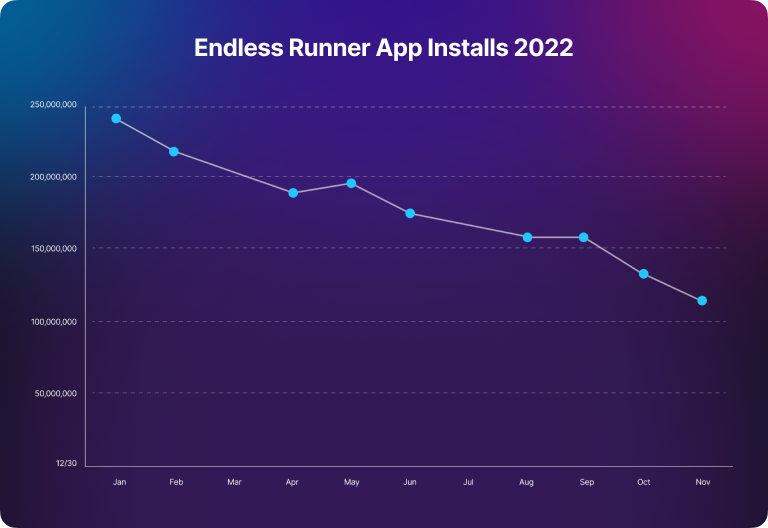
Source: Azure Games
A culprit of this is due to the oversaturation of the market. This genre is the entry point for mobile game developers. They’re simple and quick to make. You have a lot of people now teaching themselves to code and build games, starting with hypercasual. And you see more studios turning to hypercasual because there are more accessible deals from publishers.
Here are some additional details about the challenges of monetizing hypercasual games:
- The market is very competitive. There are millions of hypercasual games available on the app stores, and it is becoming increasingly difficult to stand out from the crowd.
- Players are less likely to watch ads. Players are becoming more accustomed to ad-free experiences, and they are less likely to watch ads in hypercasual games.
- In-app purchases can be difficult to sell. In-app purchases are often seen as a barrier to entry, and players may be reluctant to spend money on a game that they may only play for a few minutes.
If you’re a developer looking to create a game that will keep players engaged, hypercasual games are a great option to consider. Despite these challenges, there are still ways to be successful in monetizing hypercasual games. By being creative and innovative, developers can find ways to generate revenue and build a successful business.
For a vast wealth of insightful tips and expert workflows, we encourage you to explore the rest of our blog or our constantly updated YouTube channel.


